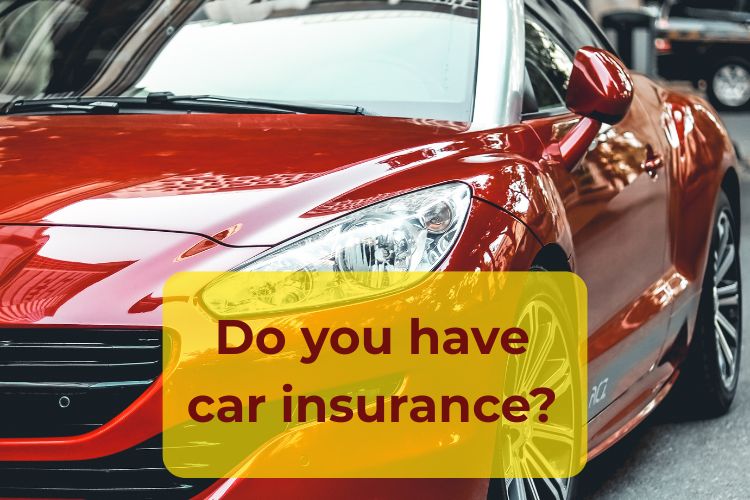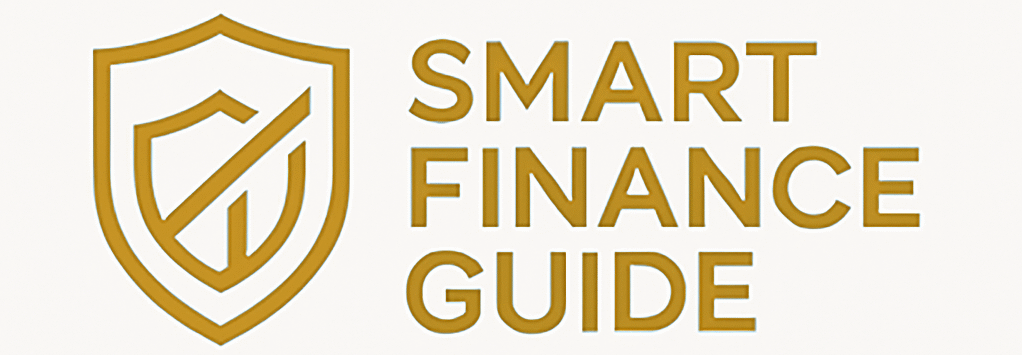If you own or drive a car in the U.S., car insurance isn’t optional — it’s a legal requirement in almost every state. But with so many types of coverage, terms, and providers, understanding how it all works can feel overwhelming.
This beginner-friendly guide walks you through everything you need to know about how car insurance works in the United States, including what’s required, what’s optional, and how to choose the right coverage.
What Is Car Insurance?
Car insurance is a contract between you and an insurance company. In exchange for regular payments (called premiums), the insurer agrees to pay for specific car-related expenses if you’re involved in an accident or if your vehicle is damaged, stolen, or vandalized.
Why You Need Car Insurance
Car insurance isn’t just a formality — it’s critical for your financial protection. Here’s why:
- It’s the law: Almost every state requires a minimum level of car insurance coverage.
- It protects your finances: Car repairs, medical bills, and lawsuits can be very costly.
- It helps others: If you cause an accident, your insurance helps pay for the other driver’s damages.
- It gives peace of mind: Avoid massive out-of-pocket expenses after a crash.
Required vs. Optional Car Insurance Coverage
✅ Required: Liability Insurance
Every U.S. state (except New Hampshire) mandates liability insurance, which pays for:
- Bodily injury: Medical bills for people you injure in an accident
- Property damage: Repairs for the other driver’s vehicle or property
Liability minimums vary by state but are often expressed as 25/50/25, meaning:
- $25,000 for injury per person
- $50,000 for total injuries per accident
- $25,000 for property damage
✅ Optional but Recommended Coverage
1. Collision Coverage
Pays to repair or replace your vehicle after an accident, no matter who was at fault.
2. Comprehensive Coverage
Covers non-collision damage: theft, weather, fire, falling objects, vandalism, or animal impact.
3. Uninsured/Underinsured Motorist Coverage
Protects you if you’re hit by a driver with no or inadequate insurance.
4. Medical Payments or Personal Injury Protection (PIP)
Pays your medical bills, regardless of fault. PIP is required in “no-fault” states.
5. Roadside Assistance and Rental Reimbursement
Optional add-ons that cover towing, flat tires, and car rentals during repairs.
Read also: How to Review and Update Your Insurance Policies Annually
How Car Insurance Premiums Are Calculated
Your premium is the price you pay for coverage (monthly, semi-annually, or annually). It’s based on:
- Age and gender
- Driving record and history of claims
- Type of vehicle
- Geographic location
- Annual mileage
- Credit score (where allowed)
- Coverage levels and deductibles
Pro tip: The more risk you pose to the insurer, the higher your car insurance premium.
What Is a Deductible?
A deductible is the amount you pay out of pocket before your insurance covers the rest.
Example: If your deductible is $500 and your car repair costs $2,000, your insurer pays $1,500.
- Higher deductibles = Lower premiums, but more upfront cost if you file a claim.

How to Choose the Right Car Insurance Coverage
1. Meet State Minimums
Start with your state’s legal requirements but understand that minimum coverage may not fully protect you.
2. Evaluate Your Car’s Value
If your car is new or expensive, consider adding collision and comprehensive coverage. Older cars may not need them.
3. Consider Your Risk Tolerance
Can you afford a $1,000 repair bill? If not, choose lower deductibles and higher coverage.
4. Compare Quotes Online
Use comparison sites like:
- The Zebra
- NerdWallet
- Policygenius
- Compare.com
5. Ask About Discounts
Look for car insurance discounts for:
- Safe driving
- Multi-policy bundling
- Low annual mileage
- Good student performance
- Anti-theft or safety devices
Read also: How Insurance Riders Work and When You Should Add Them
Best Car Insurance Companies in the U.S. (2025)
Here are some top-rated providers based on pricing, service, and coverage:
- State Farm: Best for bundling and excellent customer service
- GEICO: Competitive rates for a wide range of drivers
- Progressive: Great for high-risk drivers and customized plans
- USAA: Top choice for military members and families
- Nationwide: Solid reputation and flexible options
What to Do After a Car Accident
- Check for injuries: Ensure everyone is safe
- Call the police: File an official accident report
- Exchange info: Get contact and insurance details from all involved
- Document the scene: Take photos of damage and the surroundings
- Notify your insurer: Report the accident as soon as possible
- Track all documentation: Keep repair receipts and medical records
Final Thoughts: Protect Yourself on the Road
Car insurance is more than just a legal requirement — it’s an essential safety net that protects your financial future. By understanding how car insurance works and knowing your coverage options, you can make smarter decisions that save you money and stress.
Whether you’re a first-time driver or just reviewing your current policy, now is the time to compare, customize, and choose the right car insurance coverage for your lifestyle and budget.
Drive smart, stay safe, and be financially protected with the right car insurance plan in 2025.
FAQ for: How Car Insurance Works in the U.S. – A Beginner’s Guide
Is car insurance mandatory in all U.S. states?
Almost. Car insurance is legally required in 49 out of 50 states — New Hampshire being the only exception (though drivers there must prove financial responsibility if they skip coverage).
📌 Even in states with looser rules, you’re still financially liable if you cause damage. That’s why carrying at least liability insurance is strongly advised nationwide.
What is the difference between liability, collision, and comprehensive coverage?
Liability: Covers others’ injuries and damages if you’re at fault. Required in most states.
Collision: Covers your own vehicle damage from accidents, no matter who’s at fault.
Comprehensive: Covers non-accident-related damage — theft, vandalism, weather, falling trees, etc.
💡 Tip: If your car is leased or financed, lenders typically require both collision and comprehensive coverage.
What happens if I drive without insurance?
Driving uninsured is illegal in most states and can lead to:
Fines
License suspension
Vehicle impoundment
Jail time (in extreme cases)
Personal liability for all damages if you’re at fault in an accident
🚫 In short: It’s not worth the risk — financially or legally.
How are car insurance premiums calculated?
Insurers use a risk-based pricing model. Factors that affect your rate include:
Age & gender (young male drivers often pay more)
Driving history (accidents, tickets, DUIs)
Location (urban areas = higher rates)
Vehicle type (sports cars = more expensive)
Credit score (used in most states)
Coverage levels & deductible
Annual mileage
📉 Safe driving habits, good credit, and bundling with other policies can significantly lower your rate.
What is a deductible and how should I choose one?
A deductible is what you pay out-of-pocket before insurance covers the rest.
🛠 Example: If your damage costs $2,000 and your deductible is $500, your insurer pays $1,500.
👉 Choose a higher deductible if you want lower monthly premiums — but make sure you can cover that amount in case of a claim.
Do I really need more than the state minimum coverage?
Yes. State minimums are often insufficient in real-world accidents.
⚠️ Example: If your liability coverage is capped at $25,000 but you cause $60,000 in damages, you’re personally responsible for the $35,000 difference.
🔒 For better protection, consider:
100/300/100 liability limits
Uninsured/underinsured motorist coverage
PIP or MedPay for medical expenses
What if the other driver doesn’t have insurance?
If you’re hit by an uninsured driver and don’t have uninsured motorist (UM/UIM) coverage, you could be stuck with:
Medical bills
Car repairs
Legal battles
💡 UM/UIM coverage is optional in many states but crucial for financial protection — especially with rising uninsured driver rates.
How can I save money on car insurance?
Top ways to reduce premiums:
Compare quotes annually on sites like The Zebra, NerdWallet, or Policygenius
Bundle policies (home, renters, auto)
Increase your deductible
Take a defensive driving course
Ask about low-mileage, student, or good driver discounts
Maintain a high credit score
📲 Apps like Root Insurance or Metromile use driving data to offer usage-based insurance — ideal for low-mileage drivers.
What should I do immediately after a car accident?
Follow these steps:
Ensure safety – Check yourself and others for injuries
Call 911 – Report the accident and request medical help if needed
Exchange info – Names, license numbers, plates, insurance details
Take photos – Of both vehicles, scene, license plates, injuries
File a police report – Especially if there are injuries or major damage
Notify your insurer – Start the claims process ASAP
💼 Tip: Keep a collision checklist in your glovebox or phone for emergencies.
Are there insurance options for high-risk drivers?
Yes. If you’ve had DUIs, multiple accidents, or lapses in coverage, you might need:
SR-22 insurance (a certificate proving you have the required coverage)
High-risk insurers like The General, Dairyland, or Progressive’s High-Risk Plans
📌 High-risk insurance is more expensive, but rebuilding your record can help you return to standard rates within 3–5 years.
🚘 Final Insight:
Car insurance isn’t just a legal formality — it’s your financial lifeline on the road. With the right coverage, you’ll protect your car, your wallet, your peace of mind — and other people’s lives.
Invest a little time in understanding your policy now, and you’ll save thousands (and tons of stress) later.

